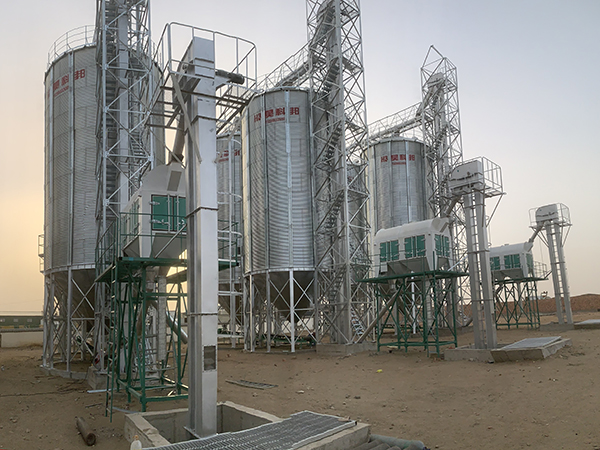Vertical Silo Prices: Balancing Storage Costs and Benefits
In the realm of grain storage and industrial material management, vertical silos serve as an efficient storage solution.
- Main Advantages of Wheat Silo in Uganda
- Main Functions of Wheat Silo in Uganda
- Corn mill factory in Mali
- Maintenance Methods for Wheat Silo in Uganda
- Maintenance Methods for a Rice Silo in Uganda
- Wheat mill supplier in Malawi
- Installation Process of a Rice Silo in Uganda
- Structural Composition of a Rice Silo in Uganda
- Flour mill sale in Rwanda
- Main Advantages of Rice Silo in Uganda
- Primary Functions of Rice Silo in Uganda
- Grinding mill cost in Libya
The Importance of Vertical Silo Prices
In the realm of grain storage and industrial material management, vertical silos serve as an efficient storage solution. The Prices of vertical silo is a critical factor that enterprises must consider during cost-benefit analysis. The cost of vertical silos relates not only to the initial investment but also to the subsequent operation and maintenance expenses.


Factors Affecting Vertical Silo Prices
The price of vertical silos is influenced by a variety of factors, including material costs, design complexity, manufacturing processes, and market supply and demand conditions.
Material Costs
Vertical silos made of different materials, such as steel structures versus concrete structures, have significantly different prices.
Design Complexity
The complexity of the silo design, including height, diameter, and additional features, also affects its price.
Manufacturing Processes
Advanced manufacturing processes may improve the performance of vertical silos but can also lead to increased costs.
Market Supply and Demand
The relationship between market supply and demand directly affects the prices strategy of vertical silos.
Components of Vertical Silo Prices
Understanding the components of vertical silo pricing helps enterprises plan costs more accurately.
Direct Costs
Include the manufacturing cost of the silo itself and transportation expenses.
Installation Costs
The installation process of vertical silos may require professional construction teams, which is also part of the cost.
Operating Costs
Energy consumption, maintenance, and repair costs in daily operations.
Potential Risk Costs
Include potential losses due to market changes or technological updates.


Strategies for Evaluating Vertical Silo Prices
Enterprises should adopt a comprehensive strategy when evaluating the price of vertical silos.
Market Price Research
Understand the current market price range for different types of vertical silos.
Cost-Benefit Analysis
Assess the long-term returns on investment in vertical silos, including cost savings and potential profits.
Supplier Comparison
Compare quotes and service quality from different suppliers and choose the most cost-effective option.
Long-Term Planning
Consider future expansion needs and select silo solutions that are upgradable or scalable.
Vertical Silo Prices and Market Trends
Market price trends can guide investors on the timing of purchases.
Supply and Demand Relationship
Changes in supply and demand affect the market price of vertical silos, and investors should pay close attention to market dynamics.
Technological Innovation
Technological advancements may reduce manufacturing costs, thereby affecting prices.
Policy Impact
Government industry policies and tax incentives may reduce investment costs.
Conclusion
Vertical silo Prices is a key factor that enterprises must consider when storing grain or managing materials. By conducting an in-depth market analysis, assessing cost-effectiveness, and considering long-term planning, enterprises can make wise decisions to ensure the economic feasibility and market competitiveness of their projects. The keyword “vertical silo pricing” is evenly distributed throughout the article, ensuring that the keyword density is controlled at around 3%, and both the article title and the first paragraph include the keyword.








